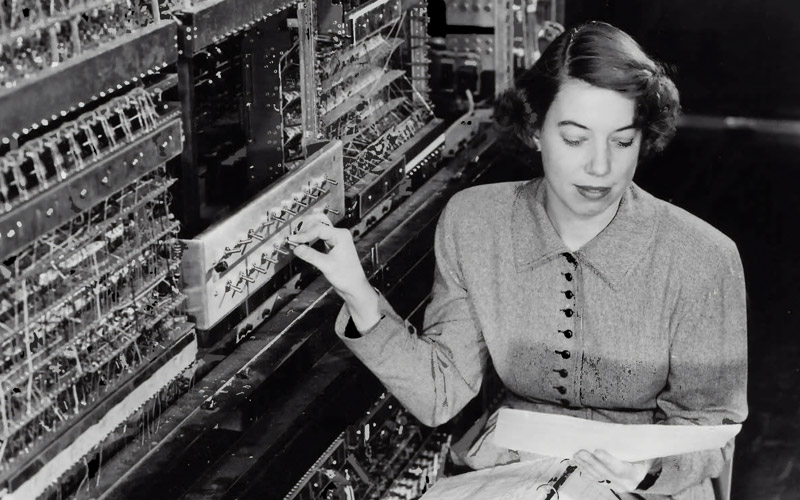Home | Technology | Machine Learning | How to use machine learning to turn your factory into a learning factory
How to use machine learning to turn your factory into a learning factory

IN SHORT
This is the headline
To really improve production processes we need data from different sources
This is the headline
Dashboards help us turn that data into actionable information
This is the headline
Machine Learning also helps in the analysis of data, and if applied in the right way it also makes unexpected correlations visible
Based on these KPIs, management decides what needs to change in the plant. This often means that an in-depth investigation is needed to find out what is really going on. To help factories improve, we need to make sure that the right changes are made, and to do that we need to make sure that the source of the data underlying the KPIs is clear. For example, if part of a plant is experiencing unplanned downtime, that number means nothing if there is no underlying data on the cause. Underutilization, machine breakdown, material shortage - these can all be underlying reasons that should also be tracked.
It will be interesting to see how this works in a smart factory. Our goal is to use the data in a factory or a group of factories to automatically improve production and logistics processes. That means not just putting the collected data into a dashboard, but having an automated system interpret the data and suggest improvements. The mechanism for this is machine learning.
"My vision is to feed the data we collect at different levels (machines, processes, production numbers, material flow, and so on) into a machine learning algorithm, or set of algorithms, aimed at optimizing the plant."
The learning factory
It is my vision to feed the data we collect at different levels (machines, processes, production numbers, material flow, and so on) to a machine learning algorithm, or set of algorithms, aimed at optimizing the factory. The scope of such algorithms can vary according to the needs of the factory: improve production rates, reduce material losses, or make processes more sustainable. The challenge here is collecting the right data. Or rather, it isn't... The challenge is to enable the system itself to collect as much data as possible.
Let's look at that from a human perspective. Suppose we have a KPI dashboard that tells us that production is down every fourth week of the month. To identify the cause, we need to look at the underlying data for a trigger. For example, if our KPI is based directly on the number of finished products leaving the plant and the downtime of the final packaging department, that gives us a clue as to where to look, but not what to look for. It may be that maintenance has been scheduled for that fourth week in such a way that it is affecting production processes. It could also be that too many operators are taking time off in the last week of the month at the same time, or that the ordering process is such that certain parts or materials are out of stock in that fourth week.
This very simple example already shows that it is very difficult to predict which data should be collected and combined to analyze what should happen. Machine learning, at first glance, does not seem to solve the problem. How can we define an algorithm that does the work for us? Don't algorithms need input parameters to do their job? Fortunately, with machine learning, this is not entirely true, in the sense that the parameters may not need to be known in advance.
"There areseveral machine learning approaches to solving problems. The supervised and the unsupervised approaches."
There are several machine learning approaches to solving problems. In the supervised approach, the algorithm is given a labeled set of data to learn from: the type of data it receives is predefined and it uses that knowledge in its analysis. For example, it can predict the effect of certain predefined parameters on, say, production rates-similar to a human analyst looking at a dashboard. In the unsupervised approach, unlabeled data is provided without any predetermined meaning attached to it. This allows the algorithm to correlate patterns in different data sets, even if it does not know what they mean. Of course, the meaning must be added later by human users, which can also be difficult.
The combination of the two, semi-supervised learning, is an interesting avenue to explore for smart factories. The idea is to feed an algorithm with data from a factory, label the known elements (downtime, maintenance, logistics numbers) and let an algorithm correlate that with other data to discover patterns we haven't seen yet. A possible, seemingly far-fetched example: how does Thursday's traffic affect a plant's material intake on that day, and indirectly its production rate on Friday?
Data retrieval should not disrupt process
Machine learning would make a factory really smart, but there are some conditions attached. We need data, we need data sources, and we need to make sure we collect data in a way that does not interfere with existing systems. We can't just change the machines, the computer software, and the machine controls in the factory to collect this seemingly "random" data.
Our challenge is clear. We are working on it.
TIPS
This is the headline
Never underestimate the importance of data that can be obtained from even the smallest component in a production line
This is the headline
Machine learning is not the solution to everything, but correct application can produce very interesting results

shinchoku
Shinchoku, which is Japanese for "progress," is a company specializing in Smart Industry and Sustainability. Shinchoku's operations started in 2020 as a spin-off of Delphino Consultancy.